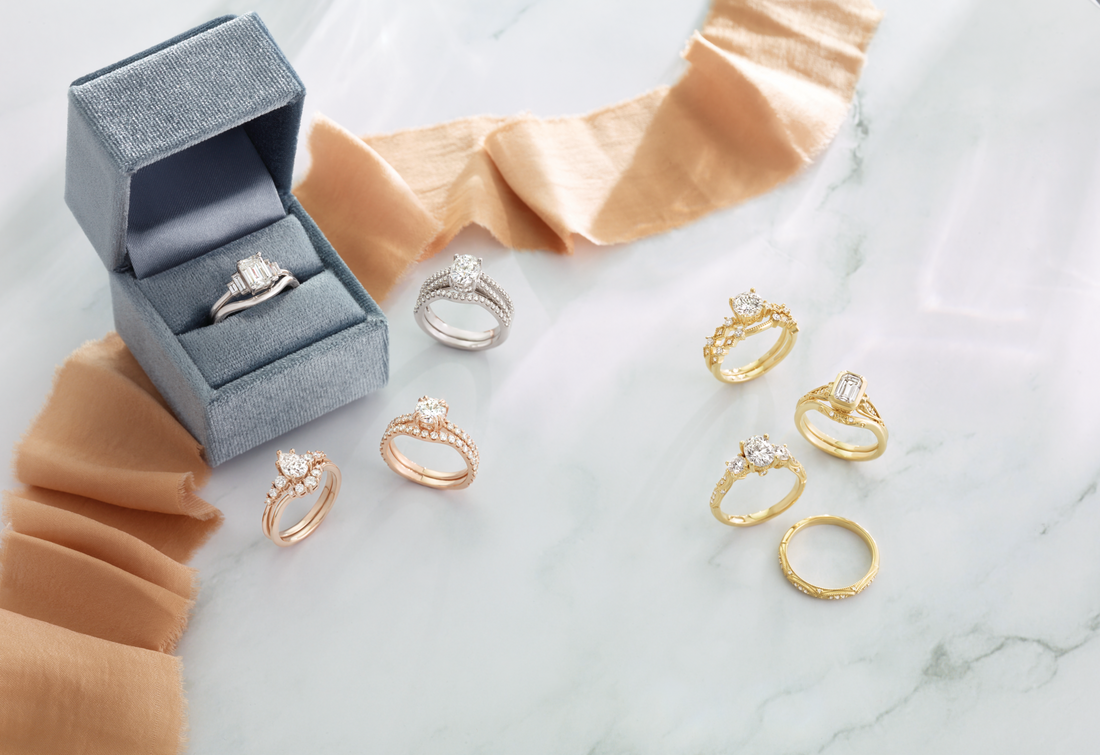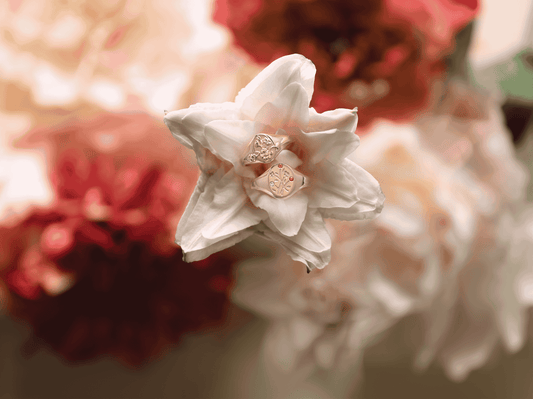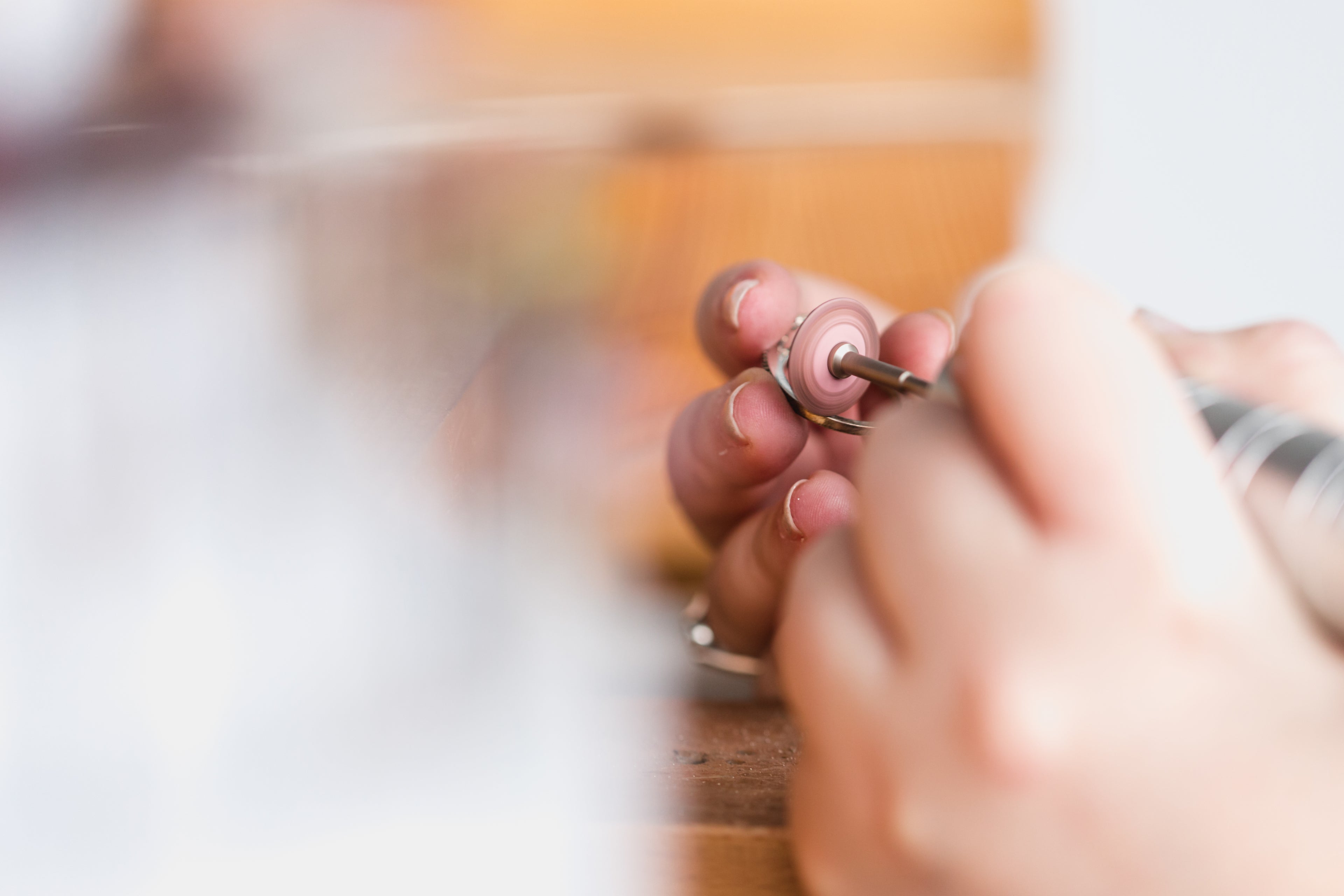When It Just Fits: The Test of True Design
A well-designed ring doesn’t ask to be tolerated.
It doesn’t leave red marks. It doesn’t twist off-center every time you reach for the soap. It doesn’t nag you with its presence. It fits—really fits—like it was always meant to be there.
My personal rule? If you’re fidgeting after ten minutes, it’s not the right fit.
Design should respond to your anatomy, not the other way around. Our bodies are smarter than we give them credit for—they know when something is off, even if it “looks pretty.” The best design feels like coming home. Effortless. Quietly sure of itself.
How I Know a Design Is “Right”
For me, good design lives at the intersection of:
- Comfort
- Symbolism
- Harmony
- Wearability
But most of all, it has to mean something. It has to spark a flicker in the chest—an inhale, a pause, a whisper of “yes, that’s it.”
When I design with clients, I’m not just listening to what they say. I’m listening for what they mean. The long pauses. The way they light up when they mention their grandmother’s hands. The hesitation when something doesn’t quite sit right.
Sketching isn’t just about what looks beautiful—it’s about creating something livable. Something that doesn’t just photograph well, but endures through dishes and dances and difficult days.
Designing for the Life You Actually Live
Your life matters in the design.
Whether your hands are in sourdough or soil, typing on keyboards or lifting small children—your jewelry should support your rhythm, not interrupt it.
Before I begin designing, I ask every client:
- What fabrics do you wear most? (Delicate knits vs denim call for different textures.)
- Do you remove your jewelry to sleep, shower, or work?
- Are there little hands or paws tugging at your rings?
- Do you garden? Cook? Sculpt? Type all day?
These questions aren’t small talk—they’re part of the blueprint. A beautiful ring that doesn’t fit your life... ends up in a drawer.
Compatibility: Materials That Work for You
No metal is perfect for everyone.
Some clients have sensitive skin. Others react to white gold’s nickel alloy or find sterling silver dulls too fast.
This is where compatibility matters. It’s not just about what looks nice—it’s about what feels right on you, all day long.
Sometimes that means steering you toward platinum or palladium. Sometimes it means skipping ornate clasps if your mornings are chaotic, or reinforcing settings if you work with your hands.
And when it comes to heirlooms? We don’t bulldoze history—we listen to it. We decide together what can be preserved and what might be reimagined, using your story as the foundation.
The Form and the Feeling: Building in Emotion
Jewelry is a time capsule.
It can hold joy, grief, hope, healing. It can carry the weight of a life event, a farewell, a new beginning.
When I design, I look for ways to capture that feeling in physical form:
- Asymmetry for love that grew in unexpected ways
- Negative space for grief and breath
- Layered bands for past, present, future
- Unique textures that speak of struggle and softness together
One widow asked for a ring with “space to breathe.” Another client wanted her mother’s chaotic, beautiful love mirrored in uneven, dancing sapphires. These aren’t trends—they’re truths, shaped in metal.
When Design Gets in Its Own Way
Some rings are stunning… until you try to live in them.
They twist when your hands move. They trap soap and gunk in hard-to-reach crevices. They snag on sweaters or baby hair.
If a design only works for a photoshoot, it doesn’t work.
I’ve seen trends come and go—knife-edge bands that pinch, settings that look like tiny sculptures but feel like torture. My job is to gently say: “This may look cool in CAD, but your finger won’t thank you for it.”
Durability doesn’t have to mean boring. It means wise.
Hallmarks of Jewelry That’s Built to Last
Here’s what I look for in every ring I create:
- Comfort curve inside the band (no sharp edges)
- Balanced weight so the ring doesn’t spin
- Protected settings that cradle, not expose, your stones
- Shank thickness that allows for future sizing or wear
- Smooth transitions between elements (your hand feels those details)
- If it’s going to live on your hand—or someone else’s hand after you—it needs to be as enduring as the story it tells.
Design Is a Conversation
The best pieces I’ve ever made didn’t come from strict specs.
They came from trust.
From a client saying: “I don’t know exactly what I want, but I’ll know when I see it.”
From the pauses, the tears, the laughter mid-call. From a shared vision that unfolds, slowly, into something no one else could wear quite the same way.
Your ring shouldn’t look like anyone else’s. That’s the point.
Let’s Design the One That’s Meant for You
If your jewelry doesn’t feel like a second skin—or a second soul—it’s not doing its job.
Book a custom consultation, and let’s create something that feels like it’s always belonged to you.





